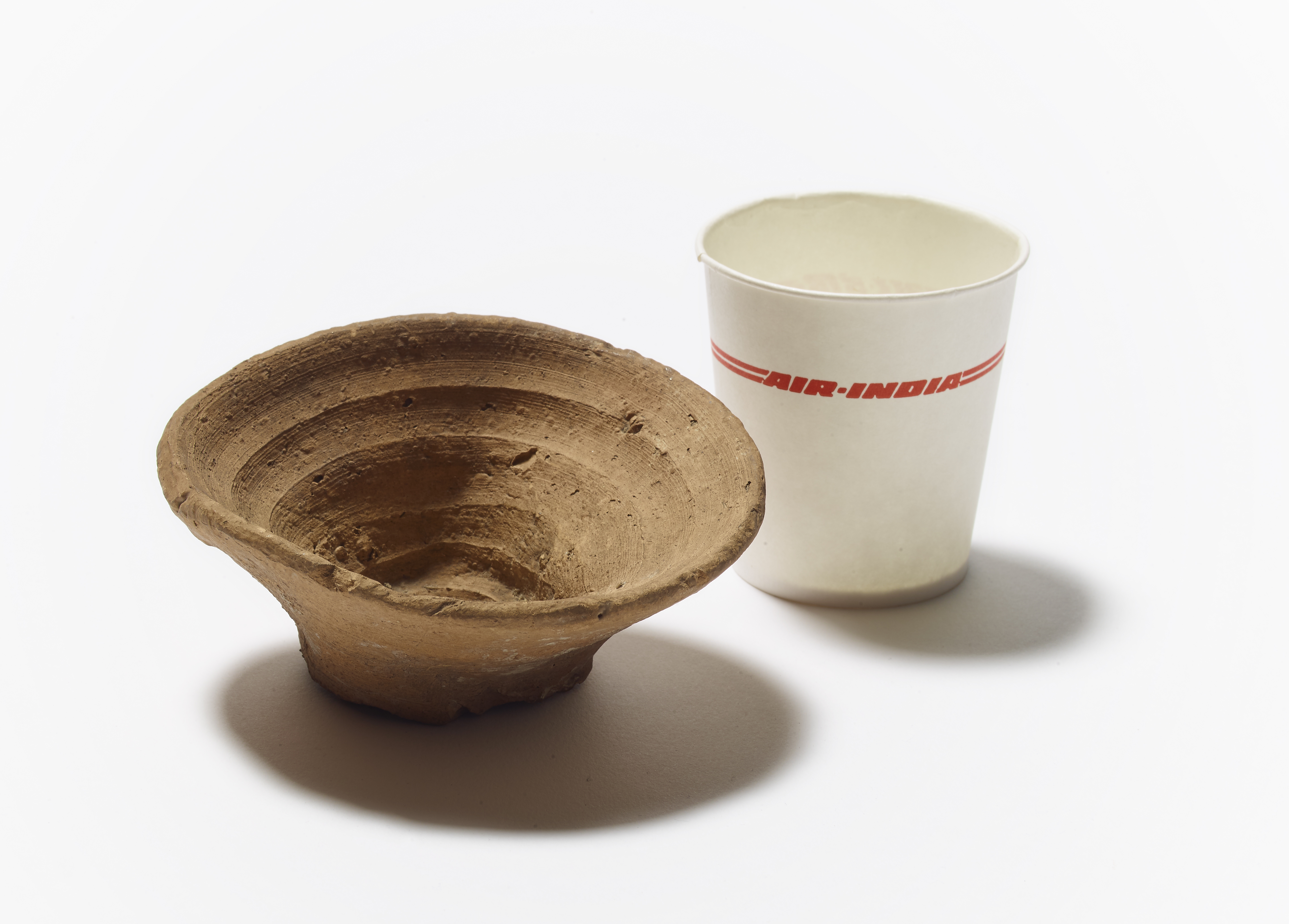
What’s the ancient equivalent of today’s iconic plastic red Solo cup, beloved at frat parties and picnics alike? It might be this disposable cup used to drink wine at feasts 3,500 years ago, which will go on view at the British Museum in London on Friday.
The ceramic receptacle was made on the island of Crete during the Minoan period, dating between 1700 and 1600 BC. It will be on display as a highlight of the exhibition “Disposable? Rubbish and us.” While the cup may at one point have been considered garbage, it’s now prized for its historical and social relevance.
The Minoans, who are recognized as one of the first advanced civilizations in Europe, mass-produced the conical-shaped clay vessels over centuries, with the cup in London being one of thousands that were recovered in high concentrations at archaeological digs. Such findings indicate that the items were often intentionally disposed of in one fell swoop—most likely after a wine-fueled gathering.
“Three and a half thousand years ago, the Minoans were using the cups for a very similar reason to us today: to serve drinks at parties,” said exhibition co-curator Julia Farley in a press statement. “People were getting together in large groups and much like today, nobody wants to do the washing up,” she cheekily added to The Guardian.
The artifact will be exhibited alongside other goods, including a waxed paper cup from the 1990s, commissioned by Air India for one-time use with hot drinks on airplanes, and a yellow fishing basket created from the plastic wrappings that perpetually wash up on the shores of Guam in the Pacific Ocean.
“Disposable? Rubbish and us” opens following mounting pressure on the British Museum from environmentalists who protest its ties to the oil company BP. In a statement regarding the exhibition, the institution emphasized the importance of remaining environmentally aware, explaining: “Museums too must play their part in reducing waste. The British Museum is striving to lessen its environmental impact, with all waste being either recycled or burned and converted to electricity.”
Hartwig Fischer, Director of the British Museum, further commented, saying, “we hope that this display will make people think about their relationship with rubbish, then, now and in the future.”